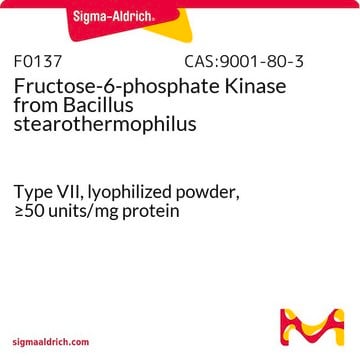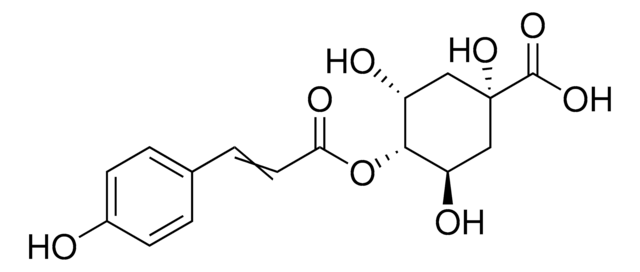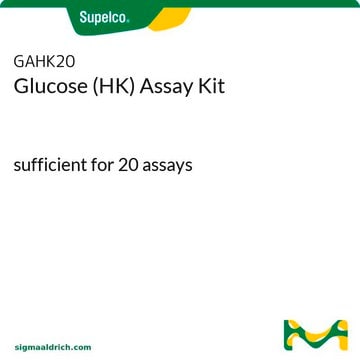MAK093
Phosphofructokinase (PFK) Activity Colorimetric Assay Kit
sufficient for 100 colorimetric tests
Sinónimos:
PFK Activity Assay Kit
About This Item
Productos recomendados
usage
sufficient for 100 colorimetric tests
detection method
colorimetric
relevant disease(s)
cancer; orthopedic diseases; aging/geriatric diseases
storage temp.
−20°C
Gene Information
human ... PFKL(5211) , PFKM(5213) , PFKP(5214)
mouse ... PFKL(18641) , PFKM(18642) , PFKP(56421)
rat ... PFKL(25741) , PFKM(65152) , PFKP(60416)
Categorías relacionadas
General description
Application
Suitability
Principle
signalword
Danger
hcodes
pcodes
Hazard Classifications
Resp. Sens. 1
Storage Class
10 - Combustible liquids
Certificados de análisis (COA)
Busque Certificados de análisis (COA) introduciendo el número de lote del producto. Los números de lote se encuentran en la etiqueta del producto después de las palabras «Lot» o «Batch»
¿Ya tiene este producto?
Encuentre la documentación para los productos que ha comprado recientemente en la Biblioteca de documentos.
Nuestro equipo de científicos tiene experiencia en todas las áreas de investigación: Ciencias de la vida, Ciencia de los materiales, Síntesis química, Cromatografía, Analítica y muchas otras.
Póngase en contacto con el Servicio técnico




